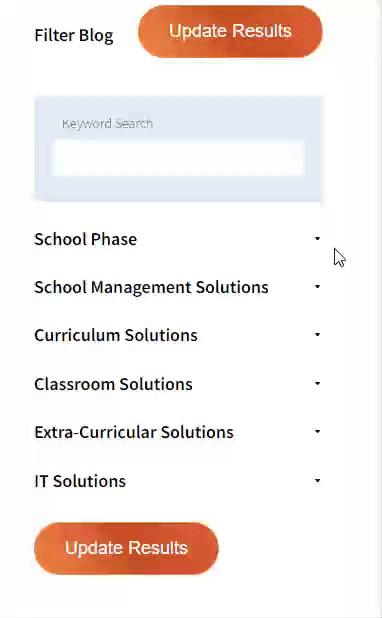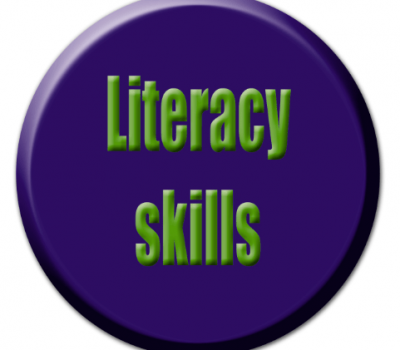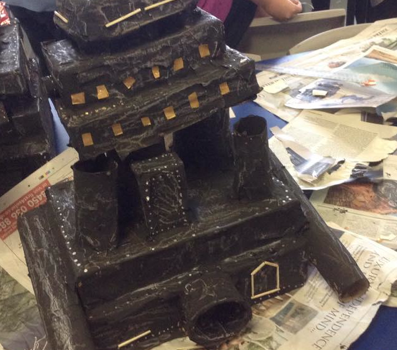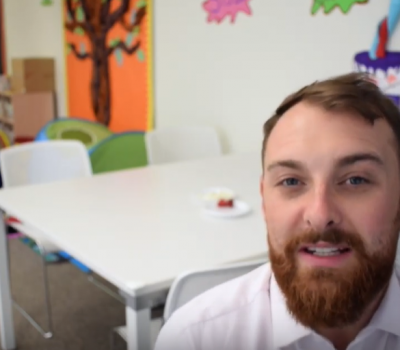


Our team sorts through all blog submissions to place them in the categories they fit the most - meaning it's never been simpler to gain advice and new knowledge for topics most important for you. This is why we have created this straight-forward guide to help you navigate our system.


And there you have it! Now your collection of blogs are catered to your chosen topics and are ready for you to explore. Plus, if you frequently return to the same categories you can bookmark your current URL and we will save your choices on return. Happy Reading!
The end of the school year is approaching (phew!). You may already know which class/ school you will be teaching in.
Nadine Finlay has some handy hints on how to make transition as easy and stress-free as possible for pupils and teachers.

This has always been an area of interest to me as I am concerned about the mental wellbeing of the children. They are moving from one teacher, classroom and routine that they know intricately, to a whole new one overnight. In worst case situations children have no handover, they are merely introduced to their new teacher in a whole school assembly, with a quick wave. I cannot bear this. How does that classify as a transition?
It has become a mission of mine to ensure that the children I work with have the opportunity to develop strong links with their next teacher.
Talking is Good!
When I worked as an EYFS lead I would visit each of the three feeder nurseries every week, for the whole year. I used the assembly time slots to nip out to them and worked with the pre-school group, introducing their next phoneme, which the nursery staff would then develop and build upon throughout that week, ready for me to introduce the next one the following week. This allowed me the opportunity to also share teaching methods and ensure there was a consistent baseline of phonics that had been taught prior to the children joining Reception in September. By the time the children joined the Reception class, I knew them and their families incredibly well and this eased their settling in period immensely.
Practice makes perfect
Have a few dry runs. Carrying out weekly events where the children get to spend time with their new teacher really helps them to prepare. I try to run bitesize transitions for the Summer term where the children all move at once, usually for 30 minutes at the end of the day on a Friday. This provides:
Make transition fun for everyone!
Running a mini-project enables the children to feel that they are learning something at their new year group level, especially if it contains skills that they wouldn’t necessarily get to learn and explore within their current year group. I always like to have a rich text that we focus on as the basis and then add in some computing, art work and a few pieces of written work. All of which creates a great wall display to have up, ready for the first day back in September.

The author

Read more

Read more

Read more

Read more

Read more

Read more

Read more

Read more


Are you looking for solutions? Let us help fund them! Nexus Education is a community of over 11,000 schools that come together to share best practise, ideas and CPD via online channels and free to attend events. Nexus also offers funding to all school groups in the UK via nexus-education.com


Established in 2011, One Education is a company at the heart of the education world, supporting over 600 schools and academies. Our unique appeal as a provider is in the breadth and synergy of the services we offer, supporting school leaders, teachers and support staff to achieve the best possible outcomes for their pupils and staff.

School Space is a social enterprise that has empowered schools for over 12 years through their profitable and hassle-free lettings services. So far, they’ve generated over £5 million in revenue for education, helping to connect over 200 schools with their local communities.


Unify is an online sales and marketing tool that allows users to create tailored personalised documents in moments.


There’s nothing special about the energy we sell. In fact, it’s exactly the same energy as all our competitors provide. But there is something special about the way we do it. Where others complicate the process, we simplify it. Where others confuse customers with hidden terms, we’re an open book. And where others do all they can to make as much money from their customers as possible, we do all we can to make as little. Everything we do, we do it differently. Our customers are a privilege. One we’ll never take advantage of.


Securus provide market-leading monitoring solutions to safeguard students on ALL devices both online and offline. We also offer a full monitoring service, where we carry out the monitoring on behalf of the school, freeing up valuable staff resources. From the smallest school to large MAT groups, Securus offers safeguarding protection for all!


Bodet Time offers dedicated solutions to education through lockdown alerts, class change systems, PA and synchronised clock systems. Improving time efficiency of the working and school day; ensuring safety through lockdown alerts; increasing communication with customised broadcast alerts.


Robotical makes Marty the Robot - a walking, dancing coding robot that makes programming fun and engaging for learners as young as 5. Our robots come with a full Learning Platform that has complete teaching resources, to make lesson planning a breeze.